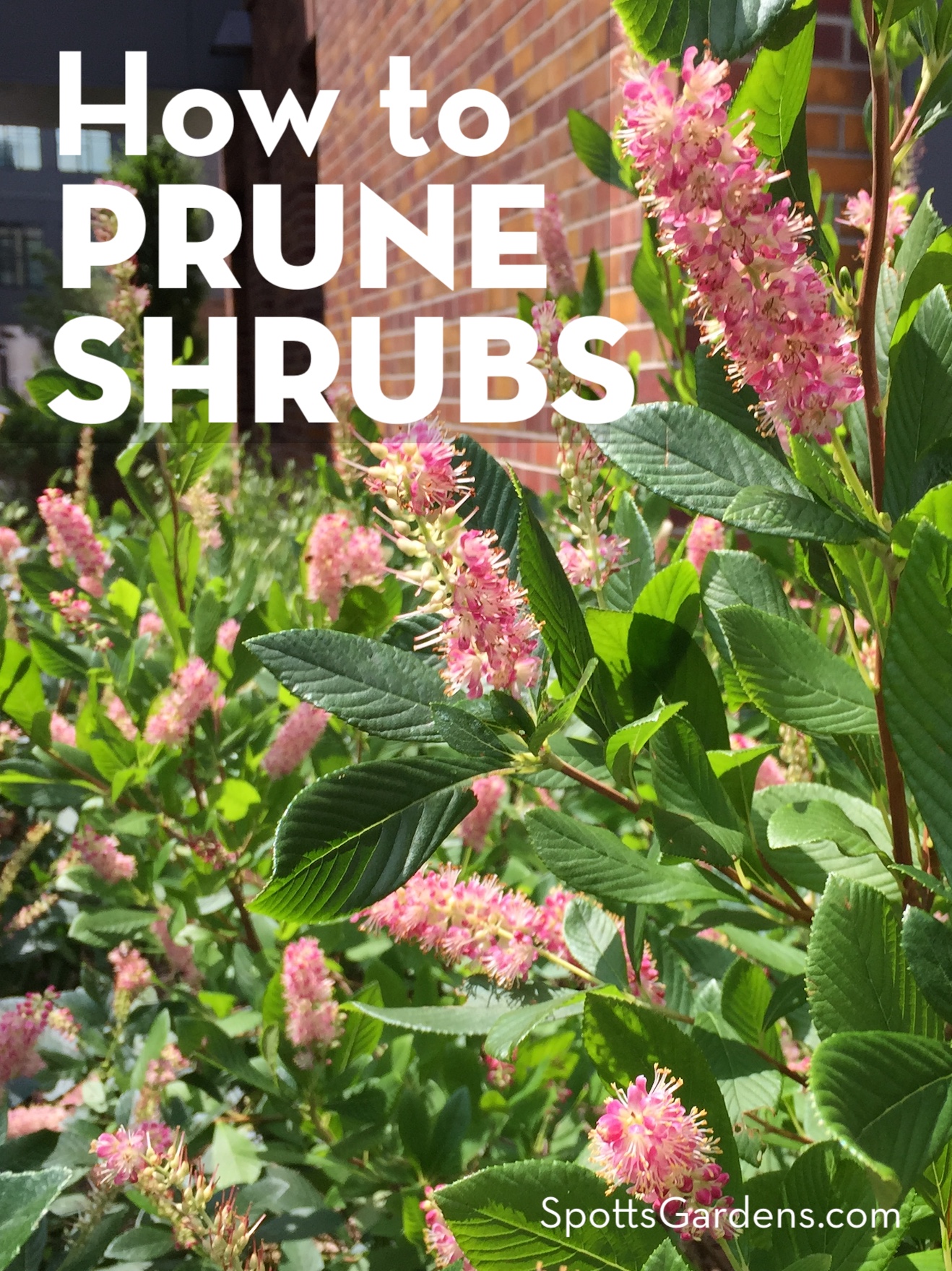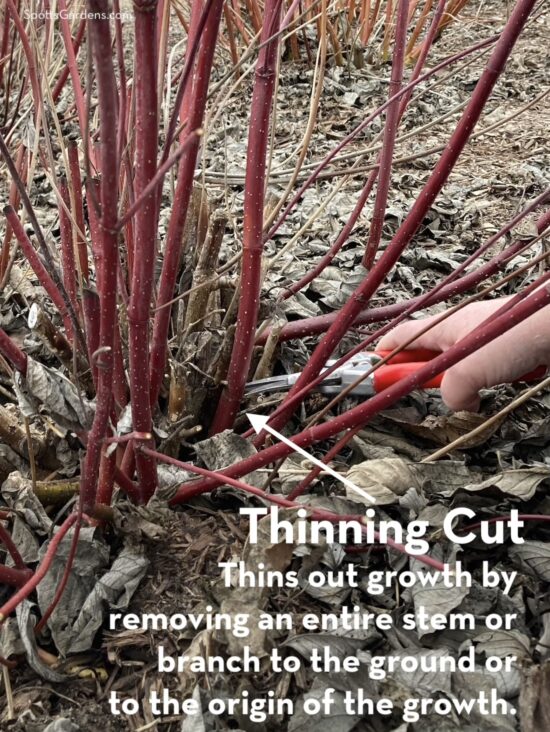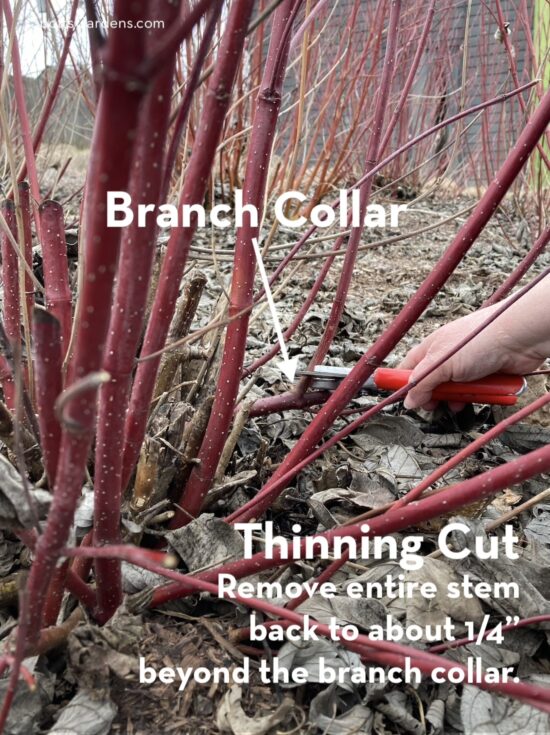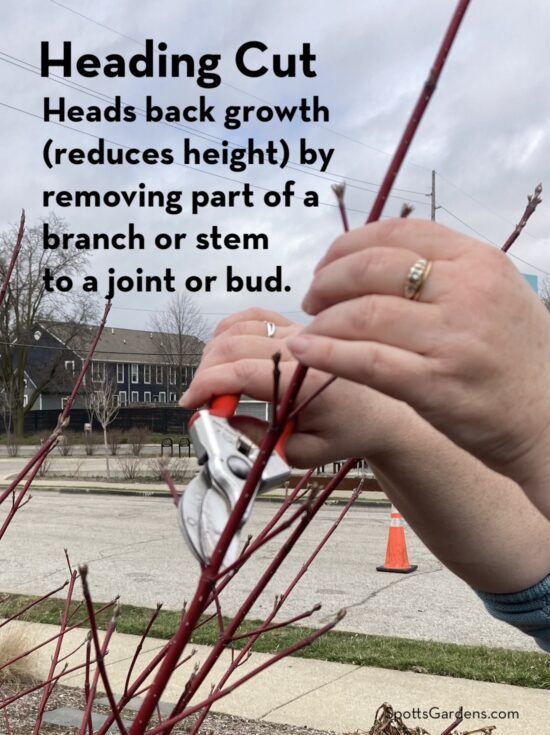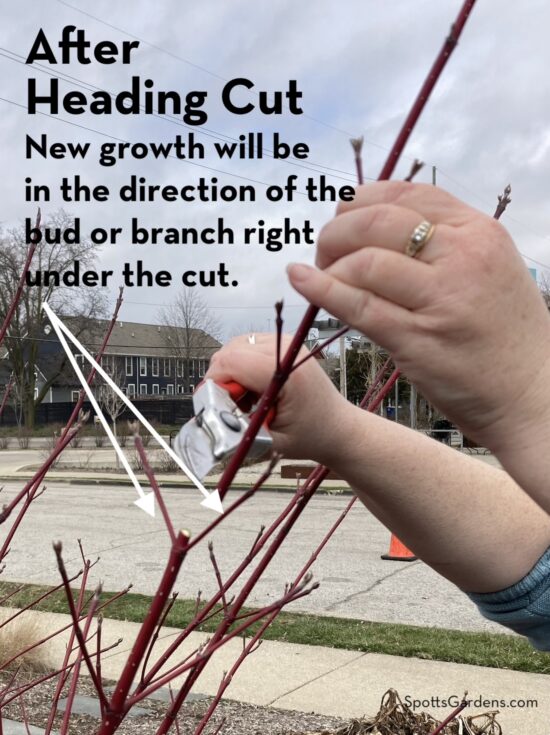We use selective pruning for the vast majority of shrubs. When we prune shrubs selectively, we take out individual branches to maintain the natural shape of the plant and make it healthier.
Most shrubs require selective pruning, not shearing. Shearing is used to change a shrub’s natural form into a different form of the gardener’s choosing. It’s only appropriate for a handful of shrubs.
To save the blooms, selectively prune summer- and fall-blooming shrubs in early spring, but prune spring bloomers right after they bloom.
To Selectively Prune Shrubs
- Grab a partner. You can do this alone, but especially with overgrown shrubs, it’s easier to have someone else watching.
- Cut away dead and diseased growth. Try to take out dead stems all the way to the ground.
- Crawl under the shrub. Shrubs grow from multiple stems from the ground, so hunt around to find the longest stem.
- Shake that stem so your partner can tell you if it’s the longest one.
- Cut that stem to the ground using pruners (for relatively small branches) or a pruning saw (for larger ones). A cut that removes an entire stem or branch is called a thinning cut. If the longest stem is actually a branch, make a thinning cut just past the branch collar.
- Repeat until you have cut away up to one-third of the stems. We try to cut primarily older stems to allow newer ones to grow up. By cutting stems to the ground, you open up the center of the shrub to light, reduce the size of the shrub, and rejuvenate growth.
- Crawl out from under the shrub and take a look.
- If you need to, make a few heading cuts to take off scraggly branches. Cut right above an existing leaf or bud, or cut at the branch joint.
- Unless you’re working on a formal (sheared) hedge, don’t shear your shrub. Slicing off the tender green growth just encourages the shrub to put on more leggy new growth.
- Walk away.
If your shrub is extremely overgrown, cut down 1/3 of the stems this year, and repeat for the next two years. By the end of the third year, you’ll have completely removed all old wood and rejuvenated the shrub!

